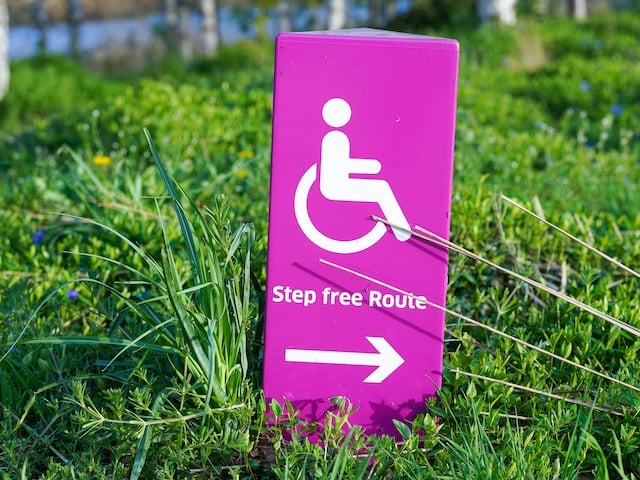Product Features
Simplecast Essentials
Independent Podcasters
For Networks & Shows
Related articles:
When it comes to podcasters, we know that, for most of them, growing their show’s audience is their #1 concern. And when it comes to growing an audience, cross-show promotion is our #1 recommendation to do so. We’ve rounded up our best practices, tips, a sample email, and a quick hack below–read on for more!
So, what is cross-show promotion?
It’s simple–cross-show promotion is when you advertise your podcast on another podcast.
Why would you want to do that?
Cross-show promotion is one of the best and most effective ways to grow your podcast’s audience. Cross-show promotion removes the of the biggest hurdles in acquiring new podcast listeners (teaching them how to listen to podcasts, if they don’t) and the biggest hurdle in advertising (friction in getting someone to do what you want). When you advertise on a podcast, you already know that the people who you’re reaching listen to podcasts (because they are when they hear your promotion) and they don’t have to go from your Facebook ad on their desktop to the podcatcher they’re using on their phone.
The best part about cross-show promotion, though, is that the average podcast listener listens to between 3-5 podcasts–so it’s not like you’re losing listeners or “stealing” them from the shows you advertise on. It’s win-win!
What does cross-show promotion look (or sound!) like?
With the caveat that podcasting (and podcast marketing) is a growing and innovative field, right now there are three main models of cross-show promotion. Most popular is the promo swap–that’s when in place of a pre-, post- or mid-roll ad, a podcast will run a teaser or trailer for your show. This could be something you put together and send over to them, or potentially they could talk for a bit about how much they like the show in the style of a host-read ad.
A second model is the episode swap. I most often see these on shows that have seasons, and therefore a season break, have gone on hiatus, or have ended completely–sometimes you can see them in shows that take a holiday break, too. Instead of the show publishing an episode they created, they’ll publish an episode of your show to their feed. Sometimes there’s an intro from the show’s host at the top of the episode, too. The end result is that a full episode of your show gets dropped into the feeds of the subscribers of the other show. This takes a lot of trust (because the audience may have their hopes up for a new episode, especially on discontinued shows) and a deep understanding of each show’s audience.
The third main model is a sponsorship model. These are generally longer-running agreements that can last a series of months or a full season, and generally sound like a promo swap. Of the three models, this one is the most likely to cost you actual money to run.
For the most part, if your audiences are of similar size, cross-show promotion doesn’t cost money, but if you’re trying to get a promo slot on someone with a VERY large audience, it might.
How do you find shows to cross promote?
The first step to finding shows that make sense for cross-promotion is research! Find shows that looks like viable targets and then (this is very important) listen to them! You should also see if you can find any press coverage or reviews of the podcast, and read that as well. All of that will help you be extremely persuasive and compelling when you reach out.
Most shows will have an email or contact form listed on their website. If they don’t, and you can’t find it anywhere else, as a last resort you can reach out over Twitter or IG DMs, but these shouldn’t be your first stop–and when you do, keep it brief and leave your email address so you can continue the conversation outside of their DMs.
Nervous about sending a cold email? We’ve got a template for you!
Subj: Hi from XYZ Podcast! Cross-show promotion?
Hi X!
My name is Caitlin Van Horn and I’m the creator and host of XYZ Podcast. We’re a show covering X, Y, and Z. I came across your show, the ABC Show, after reading about it in Vulture’s Best Kids Podcasts of 2019–and I really enjoyed the episode where you talk about A, B, and C.
I think there might be some potential overlap in our audience, and I’d love to talk about cross-promoting our shows on each other’s feeds. If that sounds interesting to you, please let me know!
Best, Caitlin VH
They’re in! What’s next?
Draw up a contract. Draw up a contract. Draw up a contract! Good fences make good neighbors, and good contracts make good promotional partners. Contracts are important because not only do they set expectations, they can also give you some protection. Imagine, for instance, if you were to do an episode swap with a show during your mid-season hiatus. The show goes on to become massively successful, and gets acquired by a large media company. Suddenly you’re getting takedown notices and threatened with copyright infringement for having a whole episode of theirs on your feed! Good thing you have your agreement with the then-host down in writing, right?
Don’t know where to start with a contract? We can help.
Who is a good cross-promotion partner?
Your research will lead you to the best partners, but you can start by looking at the content of the show, and the audience. If you’re in the same genre (like two true crime podcasts), you could be great partners–even better if you have similar themes (unsolved mysteries) and a similar tone (lighthearted but respectful). You should also look at your teams–for instance, if your co-host guested on another show, that could be a great fit. You should also think about your audience–for instance, a chatcast about homebrewing and a deep-dive into the social history of different foods are obviously two very different shows, but they might have a similar audience–millennials with disposable income and an interest in food who live in larger cities.
How do you measure success?
It’s important to have a framework in place to measure how your cross-show promotion campaign performed! There are a few different ways to measure your results–primarily, our Unique Listeners metric. If you don’t have too many other marketing campaigns running, you’ll be able to get a clear picture of the new listeners your promotion is bringing in by measuring your average Unique Listeners for the period before you started doing cross-show promotion to the average while your campaign is active. Seeing a spike? It’s most likely due to your cross-show promotion. You can also measure audience feedback, whether across social channels or in private Facebook groups or in a survey. Don’t be afraid of asking your listeners what they think! And, lastly, how do you feel about the performance–was it worth the work you put in? Do you want to do it again? Do you have the bandwidth to make it a regular part of your show? These metrics will guide whether it makes sense to do another cross-show promotion campaign!
Question about cross-show promotion? Find us on Twitter!


